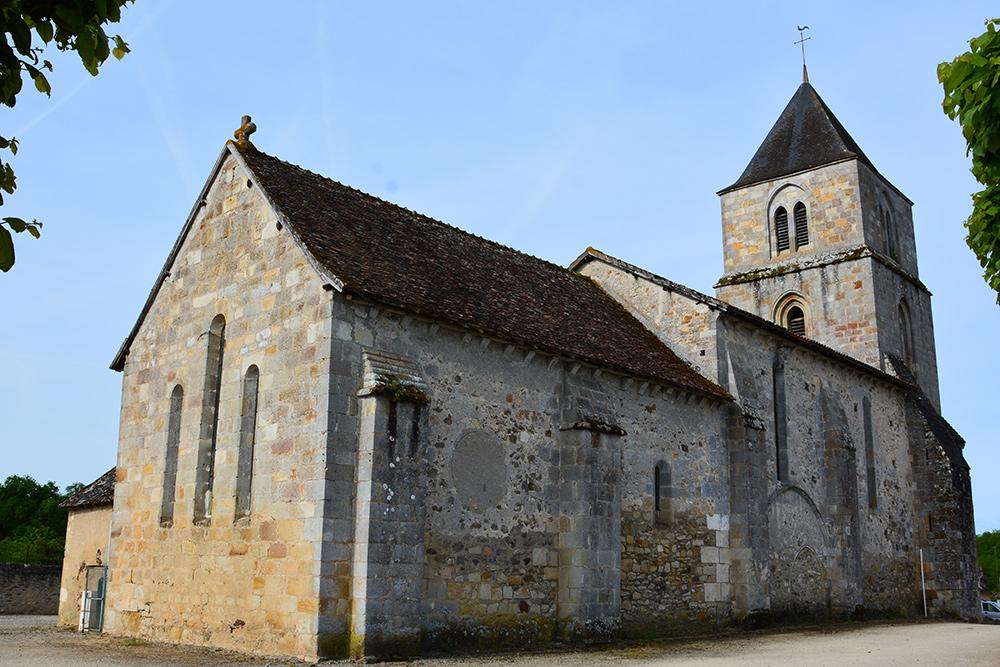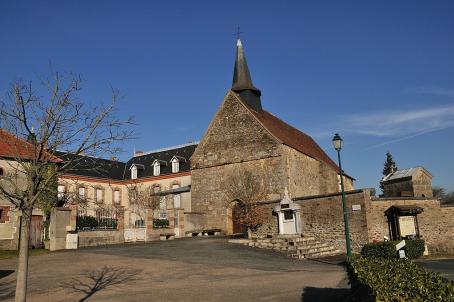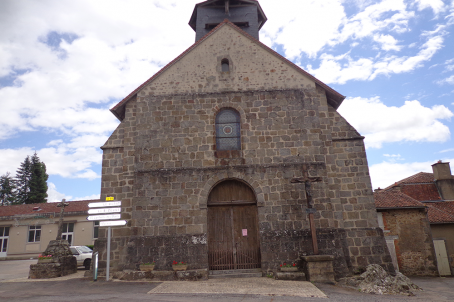Église Saint-Hilaire

The church Saint-Hilaire is a construction of late Limousin Romanesque style, integrated into the defensive system of the town. It has a 12th-century bell tower, nave and choir and a beautiful 13th-century Gothic portal. The church, redecorated in the seventeenth century, was heavily damaged in the Revolution. One can nevertheless admire a pulpit to preach, panelling, a stall, the three windows of the apse and newly discovered frescoes.
About this building
Built in the 12th century on a rocky promontory overlooking the Asse, the Saint-Hilaire church occupies the centre of Brigueil-le-Chantre, a small town on the border of the three provinces of Limousin, Poitou and Berry. In 1185 it was given to the Abbey of Dorat (Haute-Vienne), and was part of the diocese of Limoges and, after the Revolution, the diocese of Poitiers.
The church Saint-Hilaire is a powerful construction of the late Limousin-Romanesque style. Built in the perimeter of the fortified enclosure, it was integrated into the defensive system of the town.
The construction of the church dates from the twelfth century, probably on the foundations of an older building. The church consists of a three-storey bell tower, covered with a four-sided spire that was built in the twelfth century and rebuilt in the nineteenth century, a nave (twelfth century) of two arches with vaulted ribs and a choir (12th century) with a flat chevet pierced by three bays in lancets. On the southern side is a beautiful Gothic archway from the thirteenth century. At the end of the 15th century, a chapel was added south of the nave.
The church was decorated in the seventeenth century but was heavily damaged during the Revolution. Unfortunately, only a few elements of decoration have remained: the 18th-century pulpit of carved wood, the light wood panelling of the fifteenth century and, on both sides of the choir, a stall of the Louis XV style (originally painted) that extends the panelling.
Following the recent restoration work, three windows of the apse (nineteenth century) and the many frescoes of the thirteenth and fourteenth centuries, which were whitewashed during the Counter-Reformation can now be seen and admired.




